Introduction
If you’re a plant enthusiast or just someone looking to spruce up your home with some greenery, you may have come across the Swiss cheese plant and Monstera in your search. These two plants are popular choices for indoor decoration and make for great gift plants as well. However, if you’re trying to decide between the two, you may be wondering what the main differences are.
That’s where this blog post comes in! In this article, we’ll go over the characteristics and common uses of both the Swiss cheese plant and Monstera, and compare them to help you understand the differences between the two.
Wolf Winner Casino has quickly carved a niche for itself in the Australian online gaming scene. With a user-friendly interface and an extensive selection of games, it attracts both seasoned players and newcomers. From classic table games like blackjack and roulette to a vast array of slot games, Wolf Winner Casino ensures there’s something for everyone.
One of the standout features of this casino is its generous bonuses and promotions, which provide players with ample opportunities to increase their bankrolls. New players can enjoy hefty welcome bonuses, while regulars are treated to ongoing promotions, including free spins and loyalty rewards.
For more information about games, bonuses, and the overall gaming experience, you can visit their official website at https://wolfwinnercasino.org/. The site also offers a variety of secure banking options, making deposits and withdrawals hassle-free. With a commitment to responsible gaming and a dedicated customer support team, Wolf Winner Casino continues to be a preferred choice for Australian players looking for an exciting online gambling experience.
Overview of Swiss cheese plant
The Swiss cheese plant, also known as the Monstera deliciosa, is a tropical plant native to Central and South America. It’s named for the holes or perforations in its leaves, which resemble Swiss cheese. These plants are known for their large, glossy, and deeply lobed leaves that can grow up to 3 feet long.
Care and Characteristics
- Light: Prefers indirect sunlight.
- Soil: Well-draining soil.
- Watering: Should be watered regularly but not allowed to sit in standing water.
- Growth Rate: Fast growth rate.
- Air Purifying: Effective at removing indoor air pollutants like formaldehyde, benzene, and trichloroethylene.
Common Uses
- Indoor decorations.
- Great gift plants due to easy care and attractive appearance.
- Can be placed in hanging baskets, potted on shelves or tables, or trained to climb a trellis or wall.
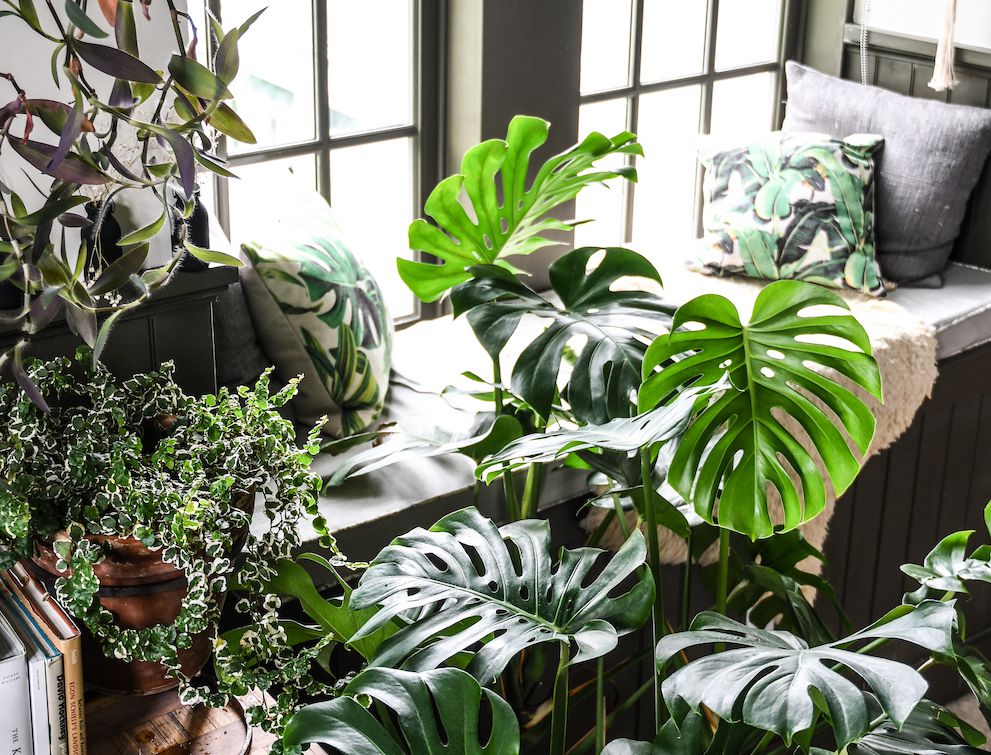
Other popular indoor plants that complement Swiss cheese plants include Epipremnum, Aglaonema, and Philodendron.
Overview of Monstera
The Monstera, also known as the split-leaf philodendron, is a tropical plant native to the rainforests of Central and South America. It’s named for the large, deeply lobed leaves that can grow up to 3 feet long and have a distinctive split or perforated appearance.
Care and Characteristics
- Light: Prefers indirect sunlight.
- Soil: Well-draining soil.
- Watering: Should be watered regularly but not allowed to sit in standing water.
- Air Purifying: Effective at removing indoor air pollutants like formaldehyde and xylene.
Common Uses
- Indoor decorations.
- Great gift plants due to easy care and attractive appearance.
- Can be placed in hanging baskets, potted on shelves or tables, or trained to climb a trellis or wall.
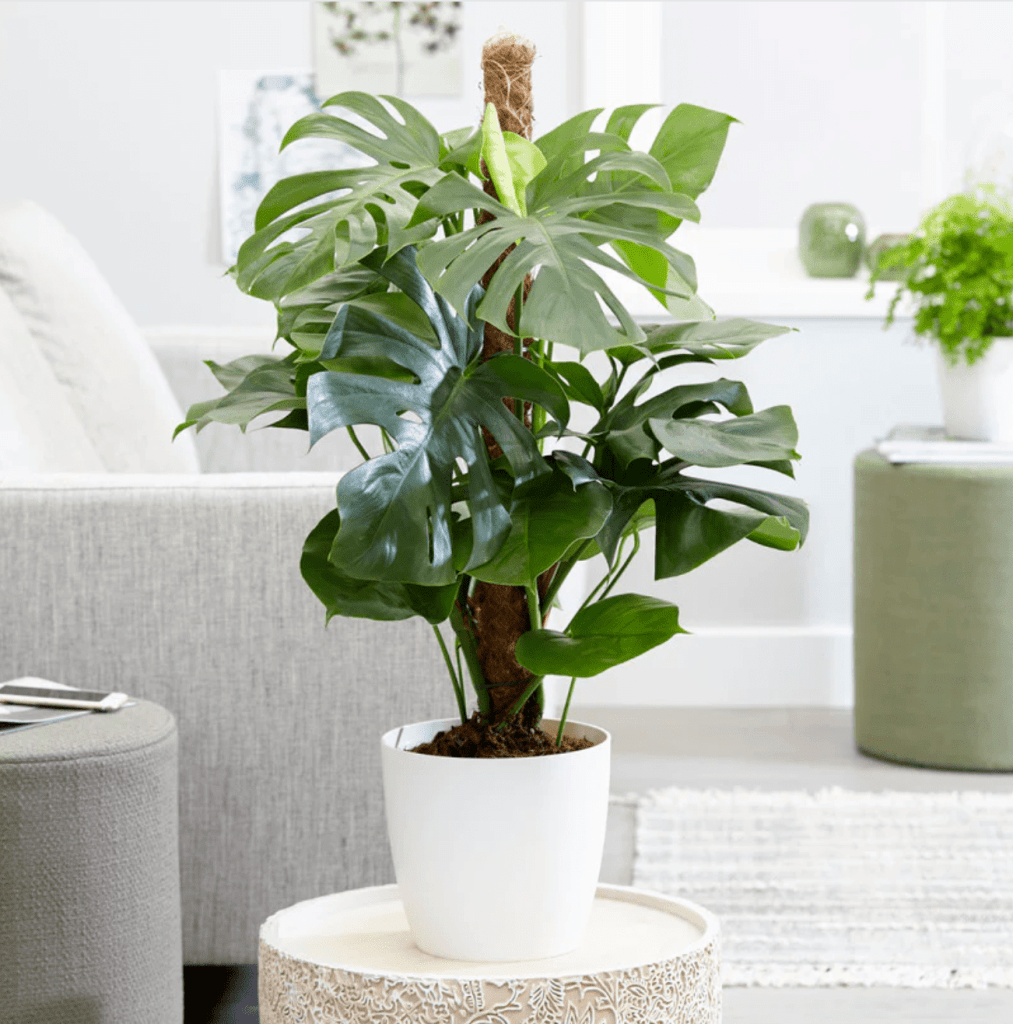
Additionally, other sought-after aroid plants like Alocasia, Anthurium, and Rhaphidophora can enhance the aesthetic of a space alongside Monstera plants.
Comparing Swiss cheese plant and Monstera
Scientific Names
- Swiss Cheese Plant: Monstera deliciosa.
- Monstera: Split-leaf philodendron.
Leaf Shapes
- Swiss Cheese Plant: Oval leaves with perforations resembling Swiss cheese; often described as more “fancy.”
- Monstera: Triangular leaves with deep splits or perforations; often described as more “rough” or “rugged.”
Size and Growth Rate
- Size: Both can grow leaves up to 3 feet long.
- Growth Rate: Swiss cheese plant has a slower growth rate compared to the faster-growing Monstera.
Air Purifying Abilities
- Swiss Cheese Plant: More effective at removing toxins like formaldehyde and benzene.
- Monstera: More effective at removing toxins like formaldehyde and xylene.
Care
- Both plants are relatively easy to care for and suitable for beginners.
- Monstera may be more forgiving if occasionally forgotten to water or not given as much indirect sunlight.
Appearance
- Swiss Cheese Plant: Leaves are more “elegant” and “fancy.”
- Monstera: Leaves are more “rough” and “rugged.”
Monstera species are the most sought after by aroid plant lovers. If you’re looking to diversify your indoor plant collection, consider adding other popular aroids like Homalomena, Scindapsus, or even rare varieties of HOYA PLANTS.
Monstera species are the most sought after by aroid plant lovers
Conclusion
In conclusion, the Swiss cheese plant and Monstera are both popular choices for indoor decoration due to their easy care, attractive appearance, and air purifying abilities. While they have some similarities, there are also some key differences between the two plants, including their scientific names, leaf shapes, growth rates, and effectiveness at removing certain toxins from the air.
When deciding between the Swiss cheese plant and Monstera, consider which plant’s characteristics and features are more important to you. Do you want a plant with a slower growth rate and more elegant leaves? The Swiss cheese plant may be the better choice. Or do you prefer a plant with a faster growth rate and more rugged leaves? The Monstera may be the better option.
No matter which plant you choose, both the Swiss cheese plant and Monstera make for attractive and low-maintenance additions to your indoor decor. For more unique and rare plants, explore options like Zamioculcas zamiifolia – ZZ plant, Dischidia, and TISSUE CULTURE PLANTS FOR SALE available at our store.
FAQs
-
Are Swiss cheese plant and Monstera the same thing?
- No, they are not the same plant, but they are closely related. Both belong to the Monstera genus, but the Swiss cheese plant is specifically Monstera adansonii, while the term “Monstera” often refers to Monstera deliciosa.
-
What are the main visual differences between them?
- Leaf shape: Swiss cheese plant leaves are smaller, more oval-shaped, and have holes throughout the leaf. Monstera deliciosa leaves are larger, more heart-shaped, and have deep splits or fenestrations, often extending to the leaf edges.
- Growth habit: Swiss cheese plants tend to be vining or trailing, while Monstera deliciosa can grow upright with support or trail along surfaces.
-
Do they have different care requirements?
- Overall, their care needs are very similar. Both prefer bright, indirect light, well-draining soil, and moderate watering. However, Monstera deliciosa may grow faster and larger than the Swiss cheese plant.
-
Why are they both called “Swiss cheese plant”?
- The nickname “Swiss cheese plant” is often used interchangeably for both species due to the characteristic holes in their leaves, resembling Swiss cheese. However, it’s technically more accurate to refer to Monstera adansonii as the Swiss cheese plant.
-
Which one is better for my home?
- The best choice depends on your preference and available space. If you have limited space or prefer a trailing plant, the Swiss cheese plant might be a better fit. If you want a larger statement plant and have room for it to climb, Monstera deliciosa could be a great option.





















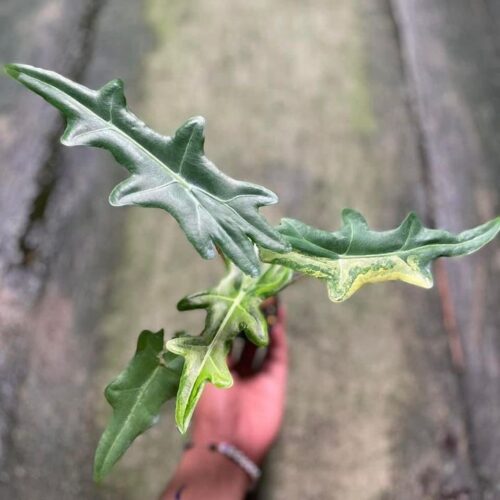
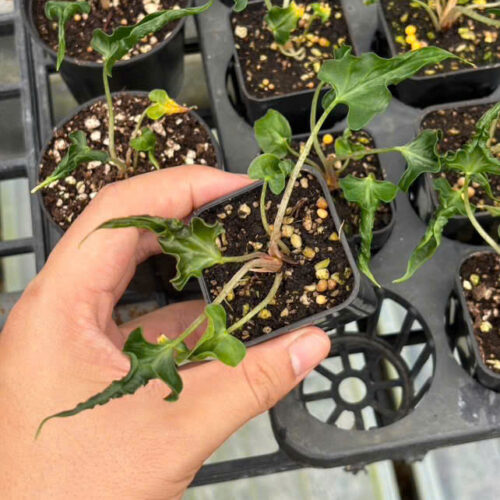
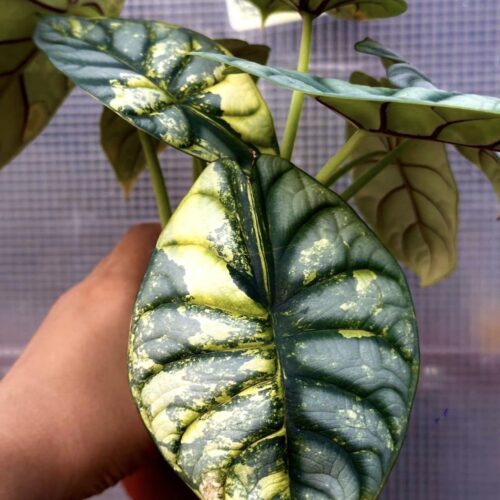
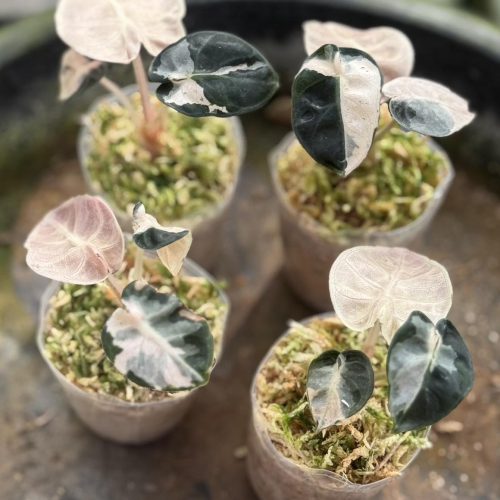
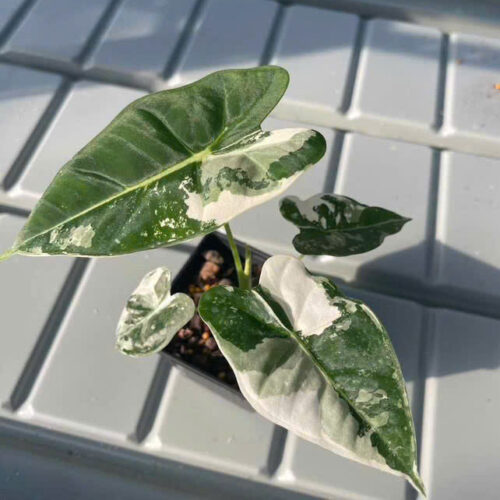
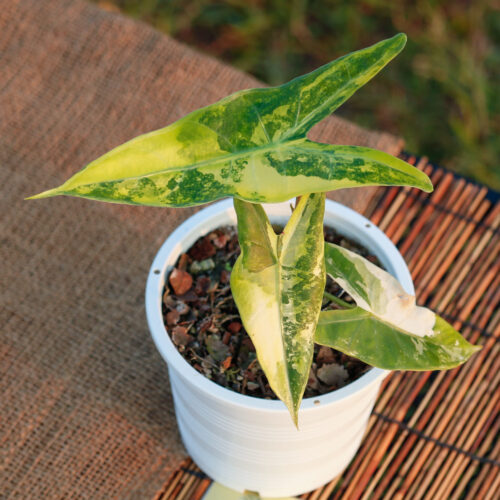
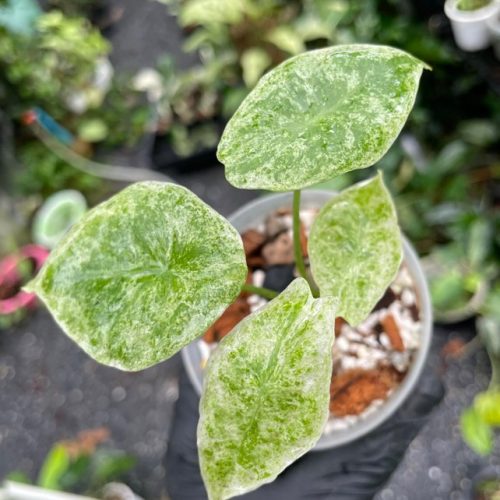
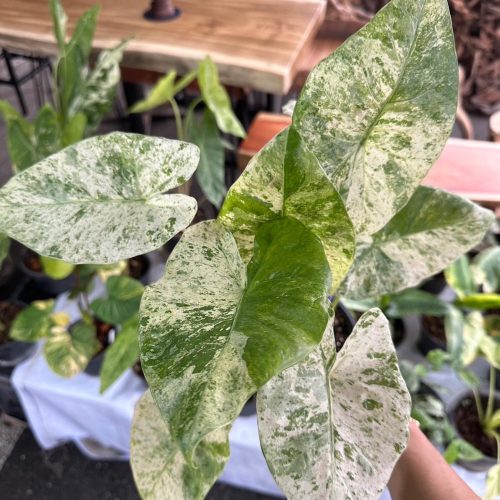

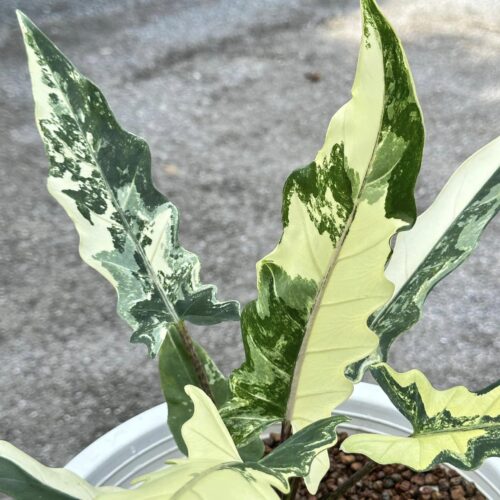
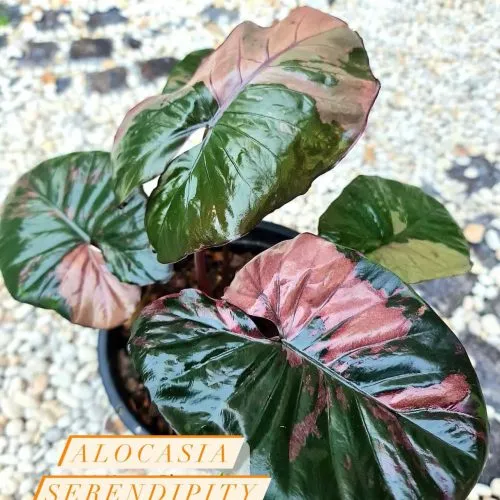

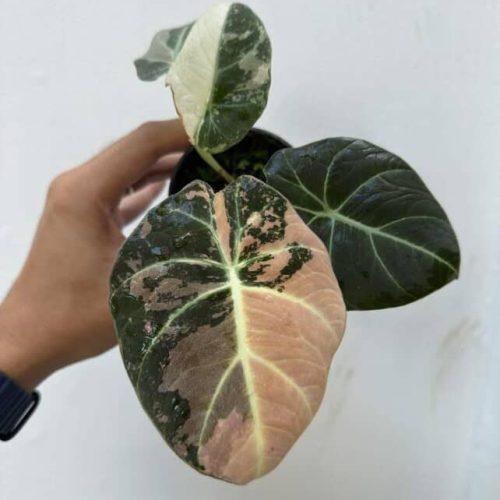
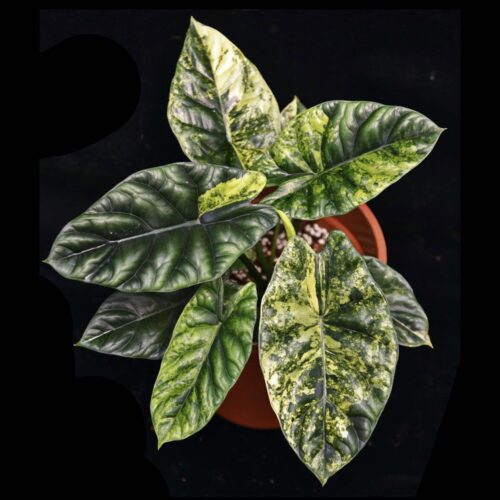
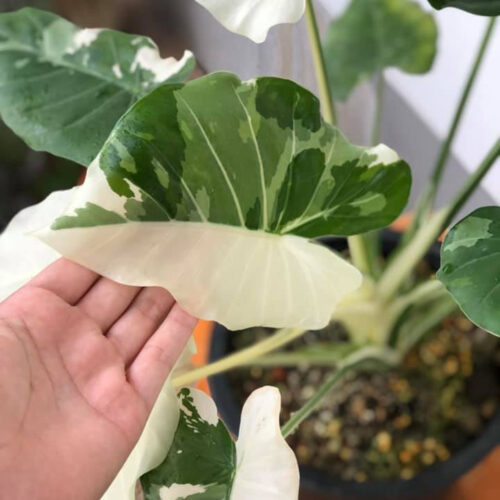
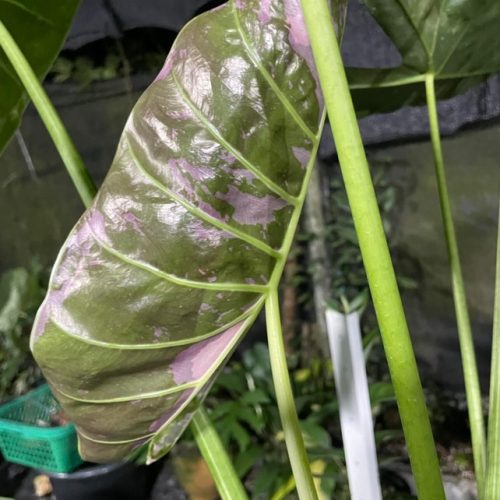
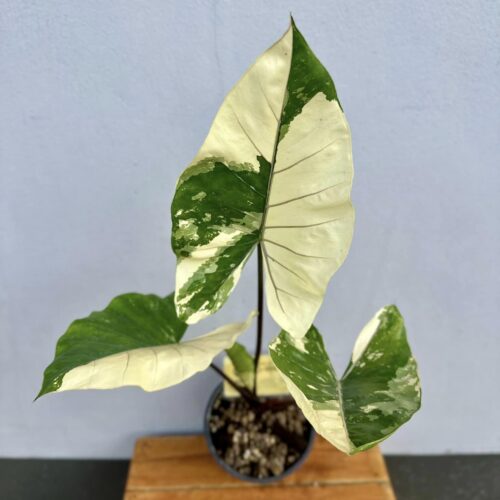
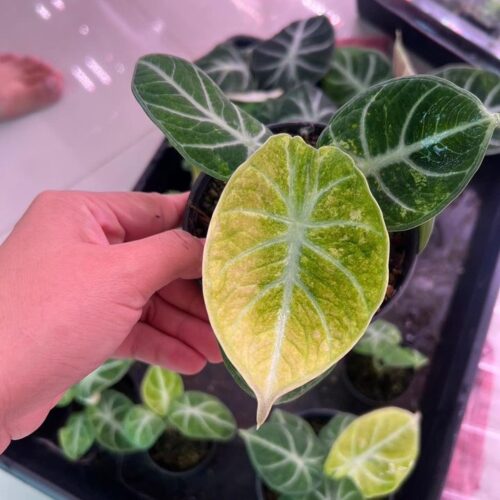
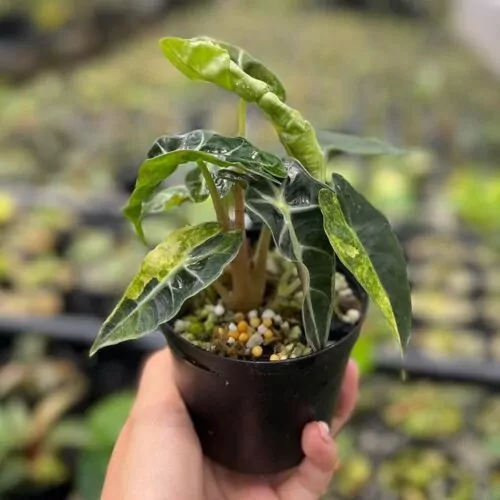
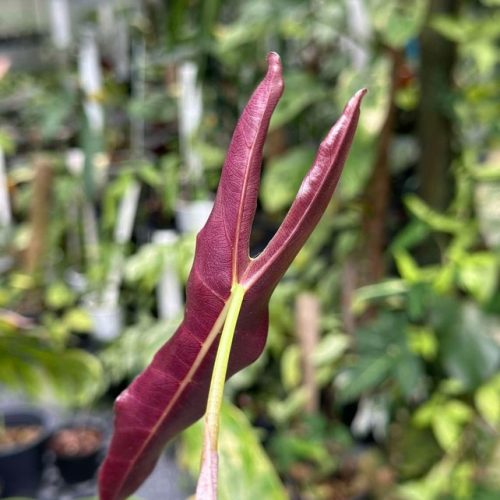
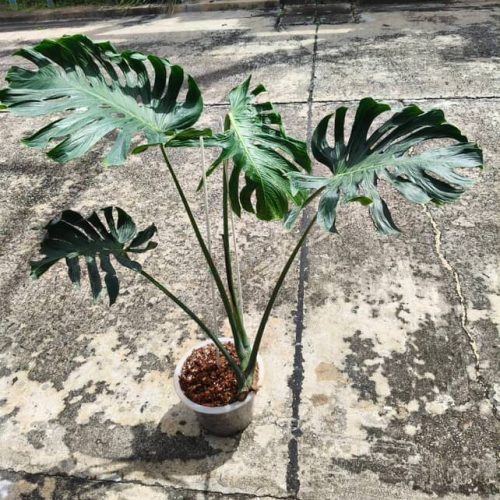
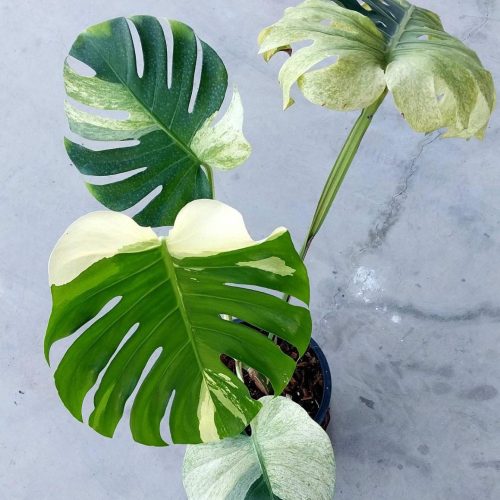



![12x Monstera Borsigiana Albo half leaves variegata [3-4 leaves]](https://greenboog.com/wp-content/uploads/2024/10/Monstera-Borsigiana-Albo-half-leaves-variegata-1-500x500.jpg)
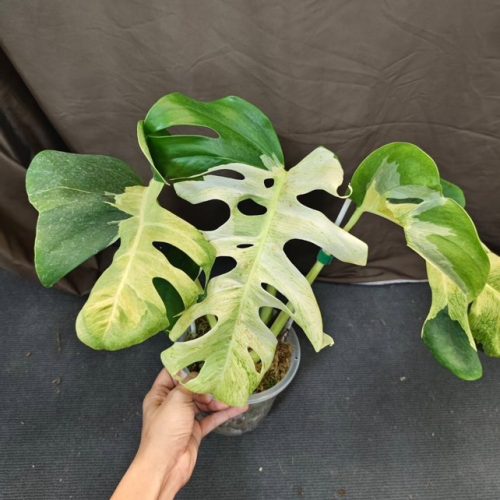

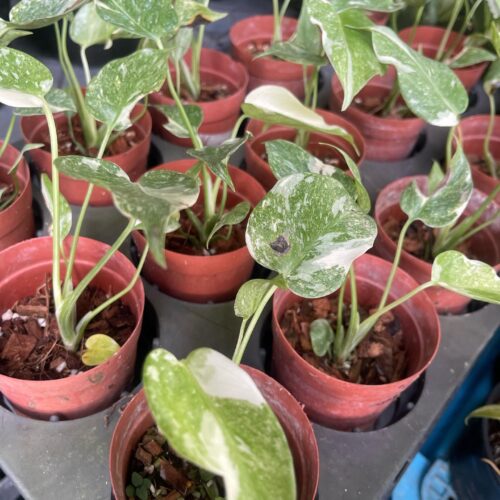
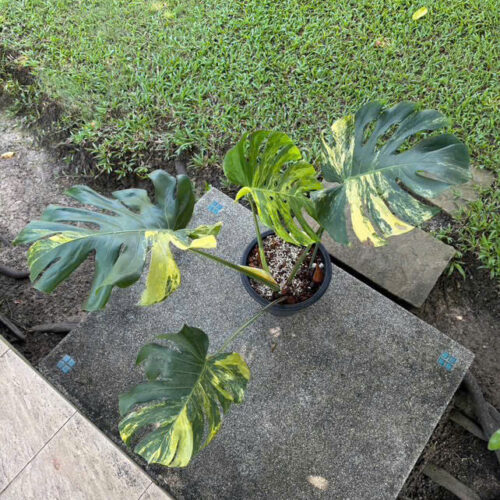
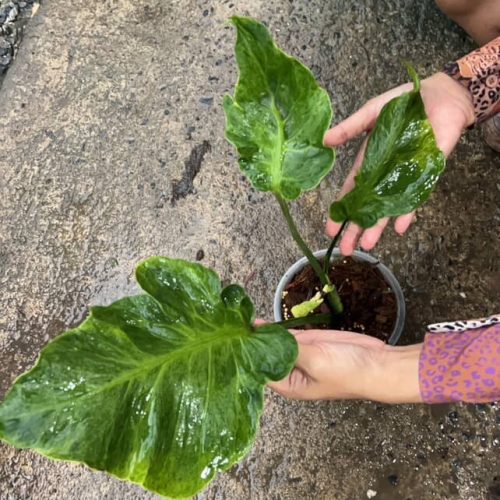
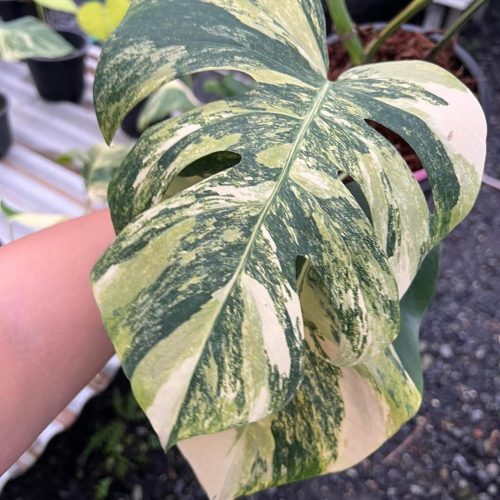

![10 Pots x Monstera Aurea Variegated / Mix Aurea tri color 3-4 leaves [well variegated]](https://greenboog.com/wp-content/uploads/2024/08/Monstera-Aurea-Tri-color-500x500.jpg)

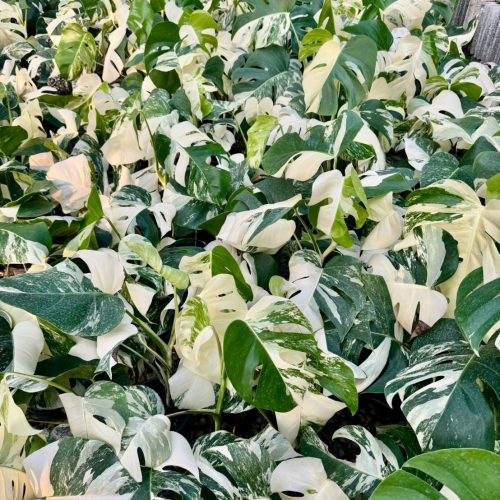
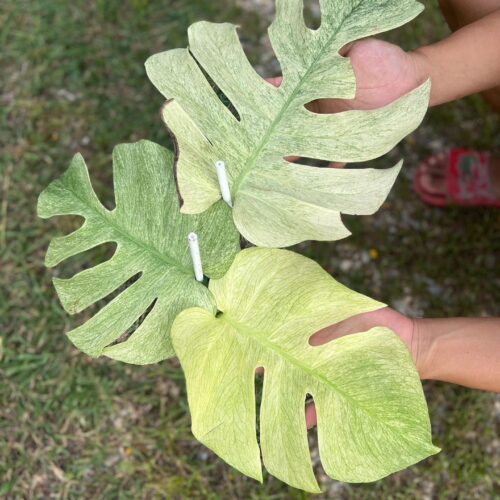
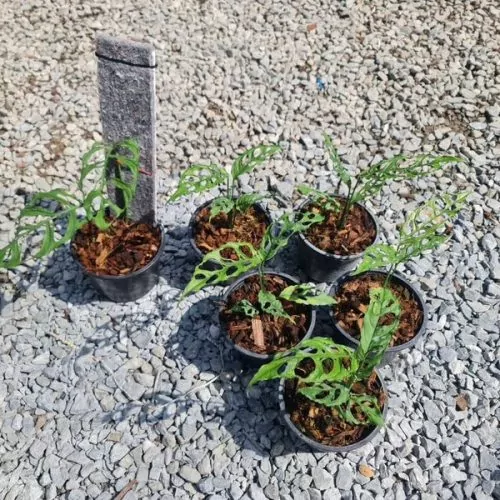
![[SALE] 10 Pots x Monstera Aurea Variegated 3-6 leaves [Medium size]](https://greenboog.com/wp-content/uploads/2025/01/Monstera-Aurea-variegated-4-6-leafs-500x482.jpg)


1 thought on “What is the difference between Swiss cheese plant and Monstera?”